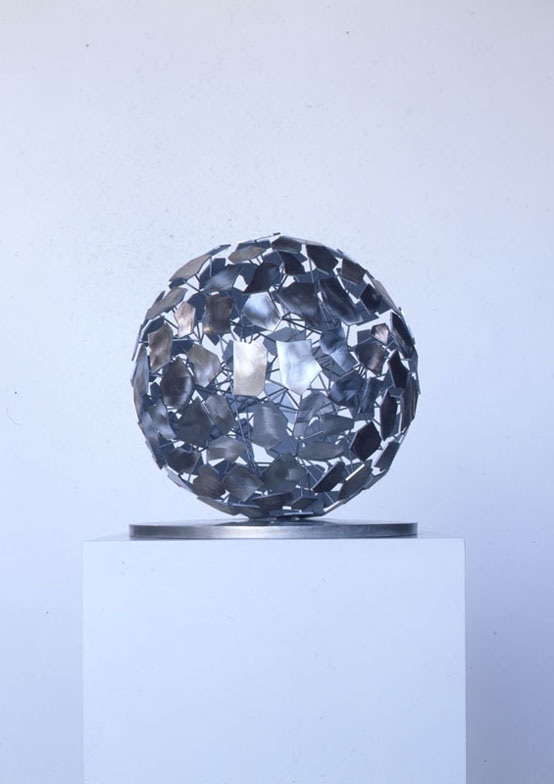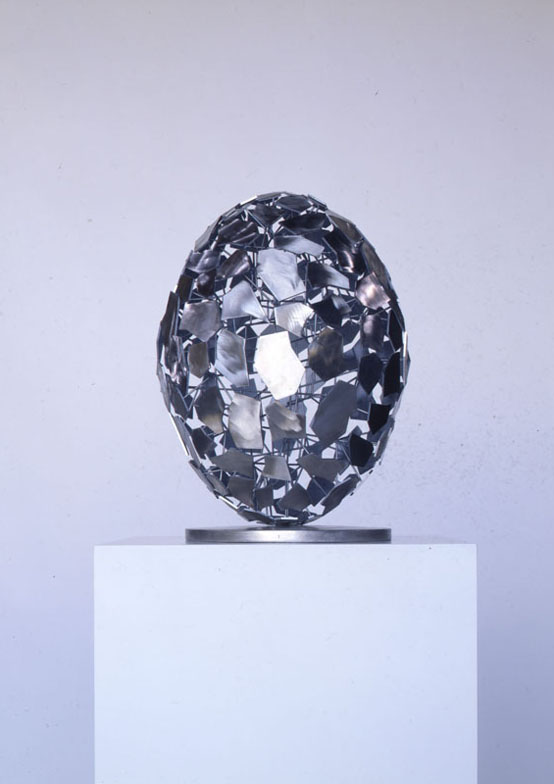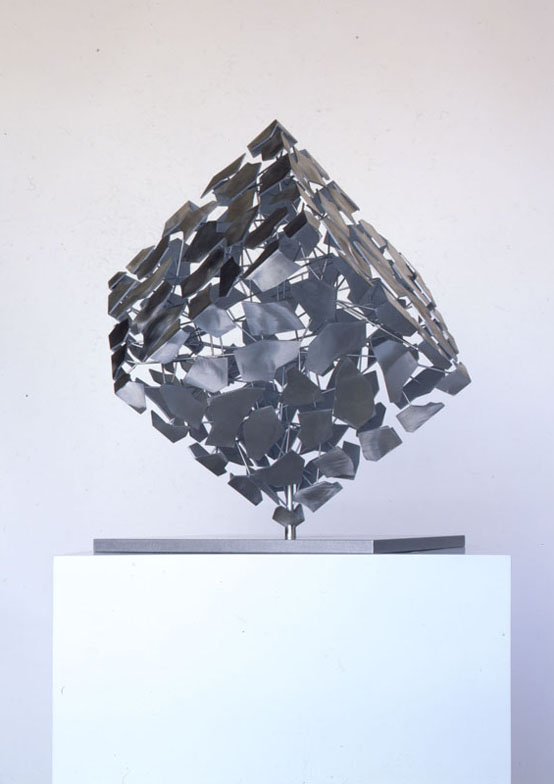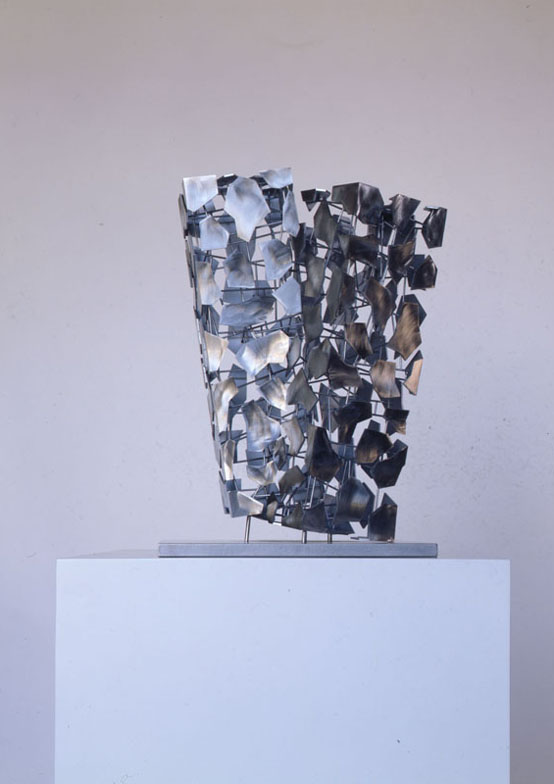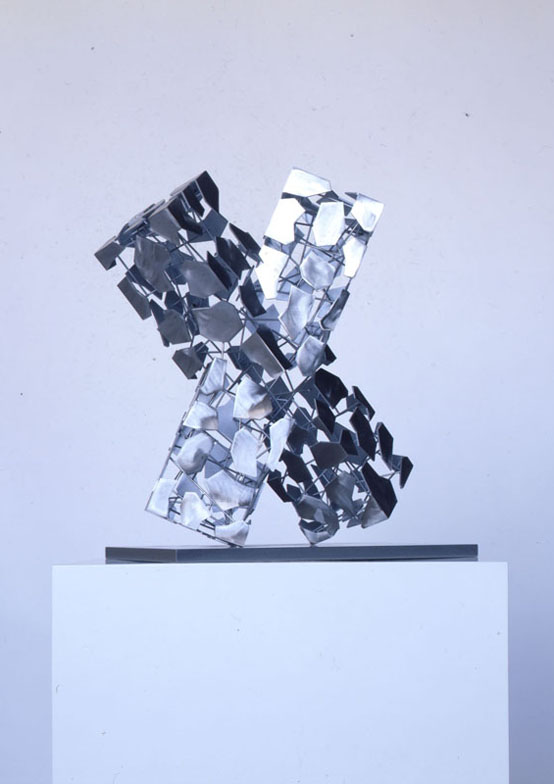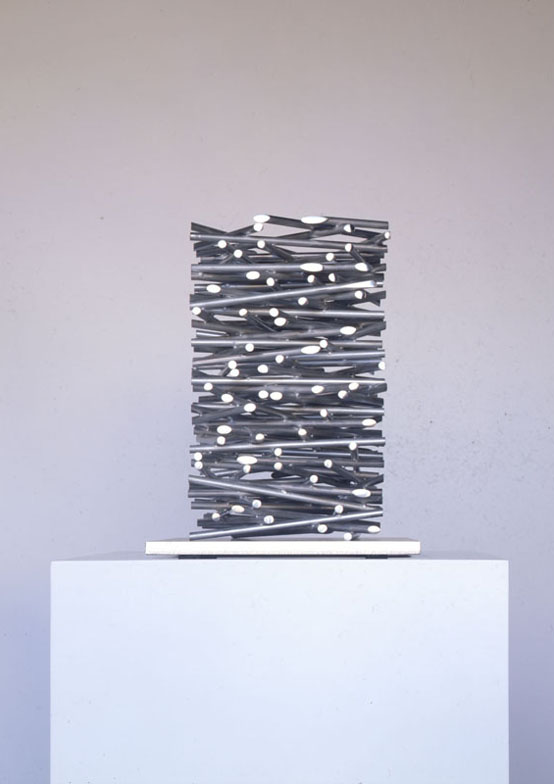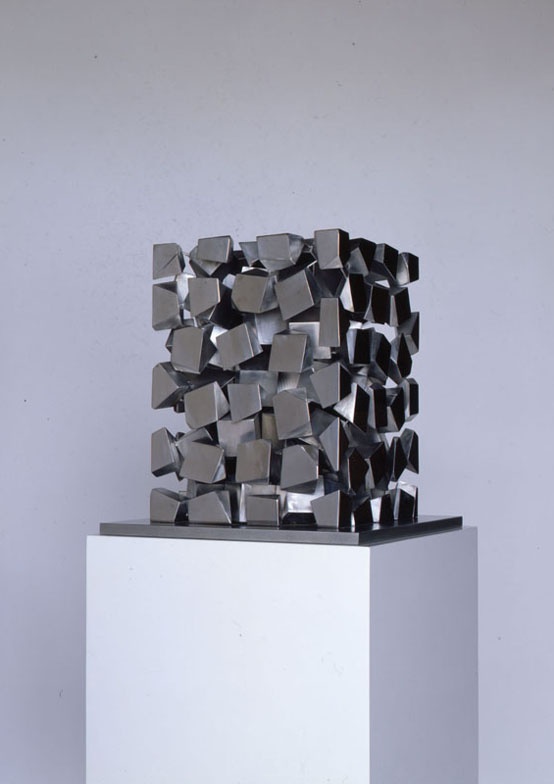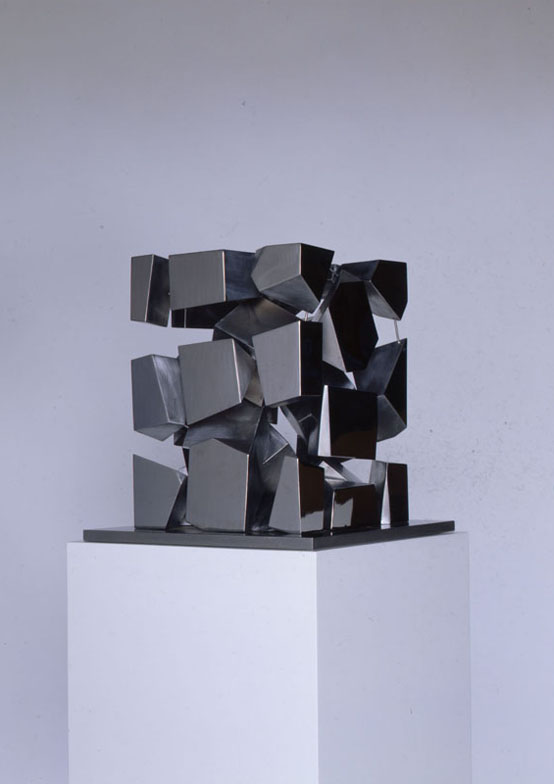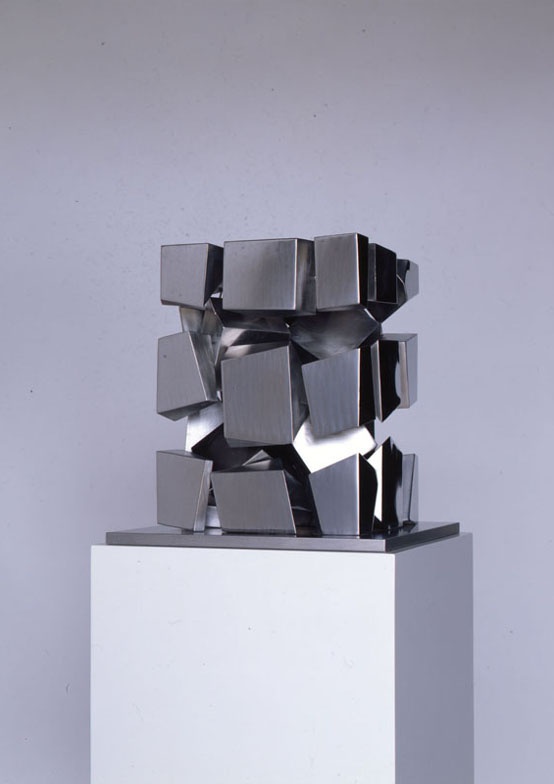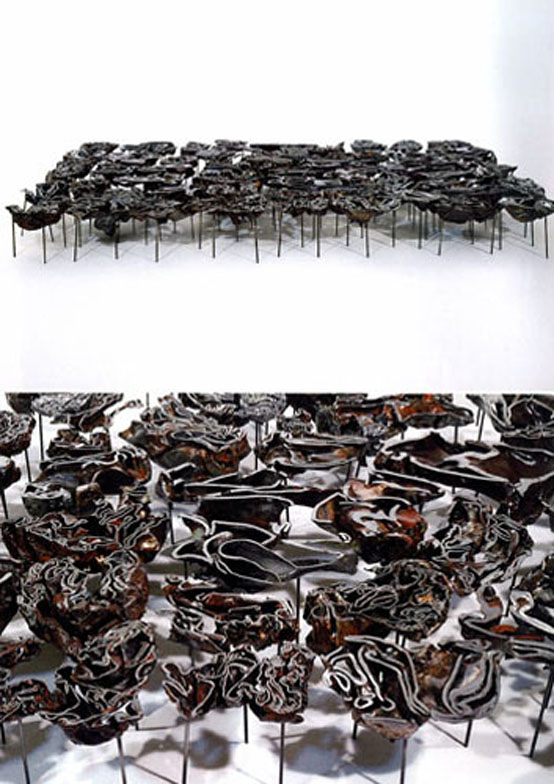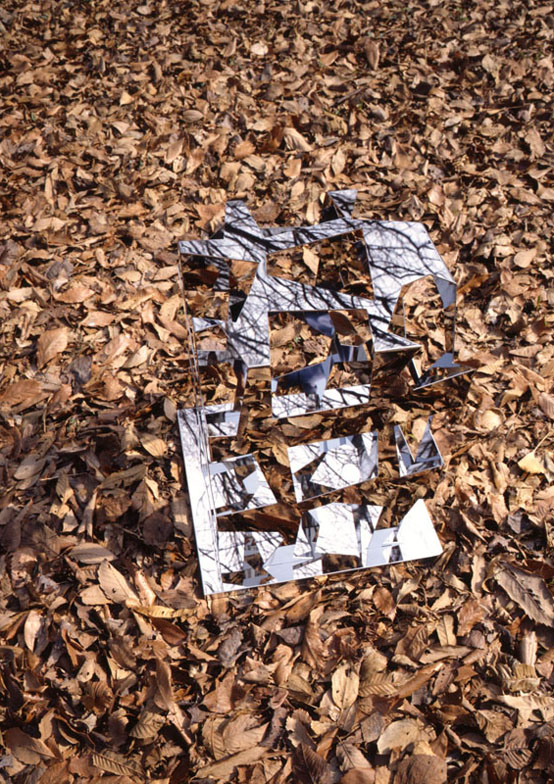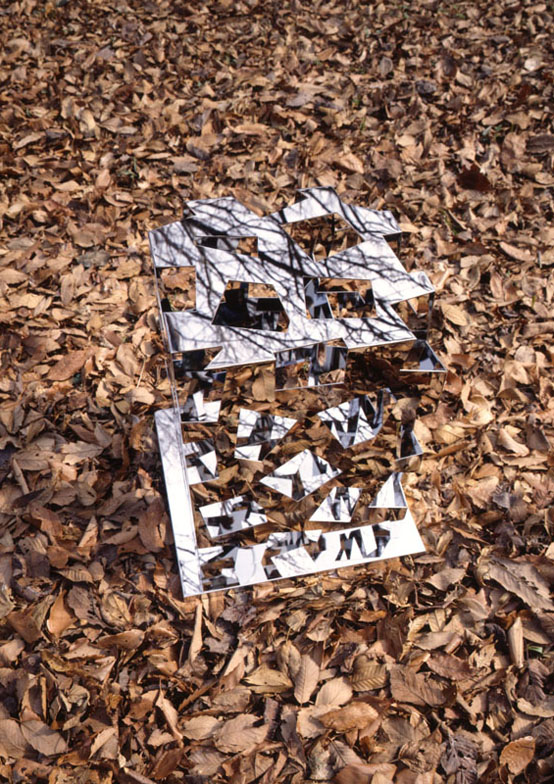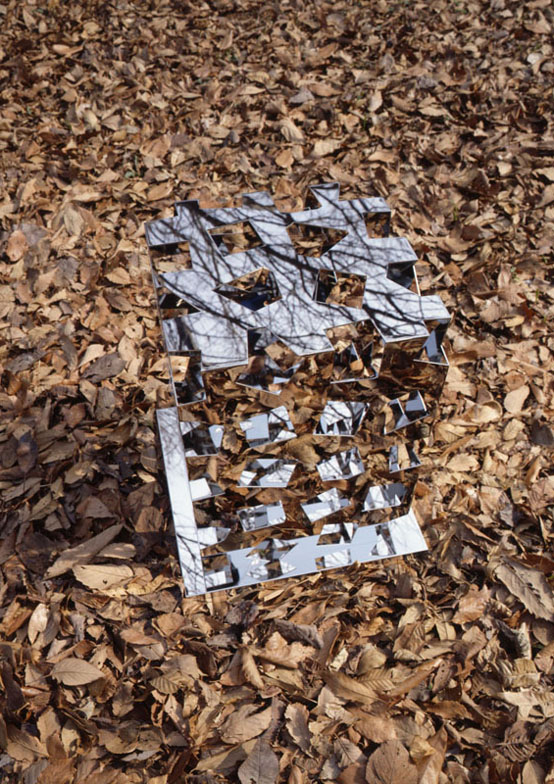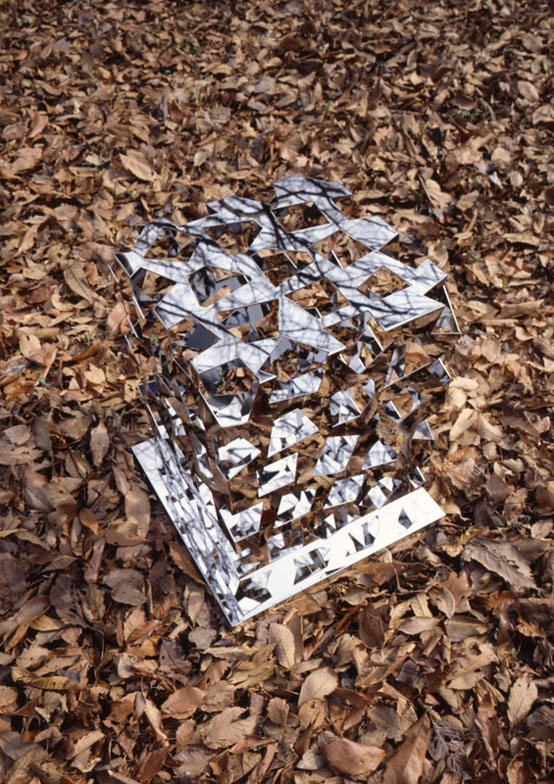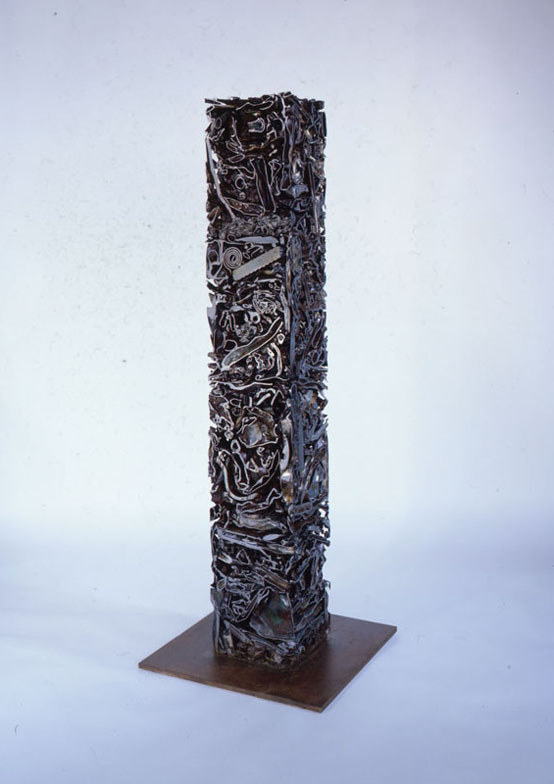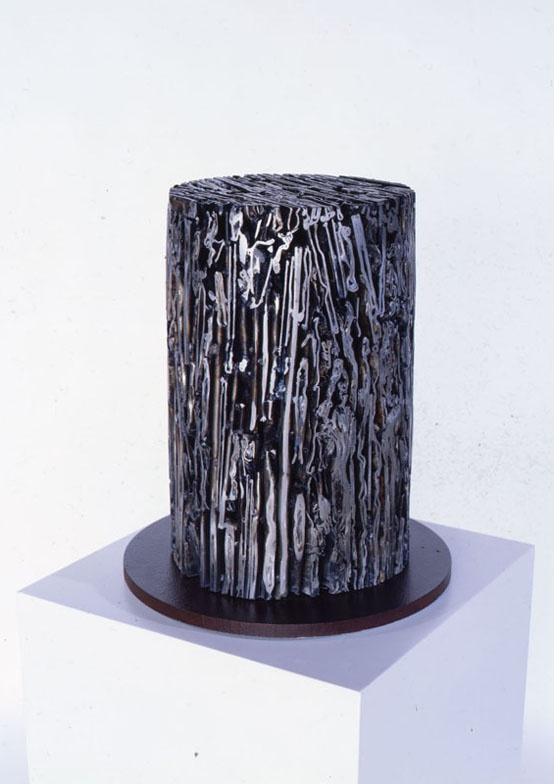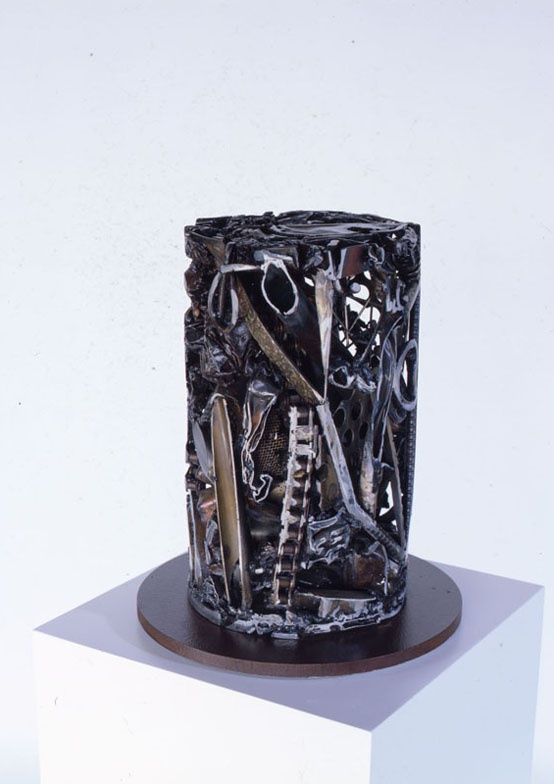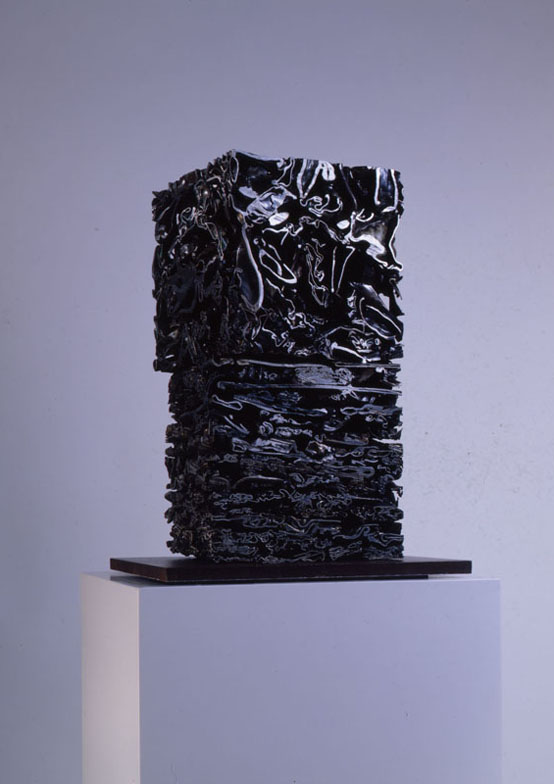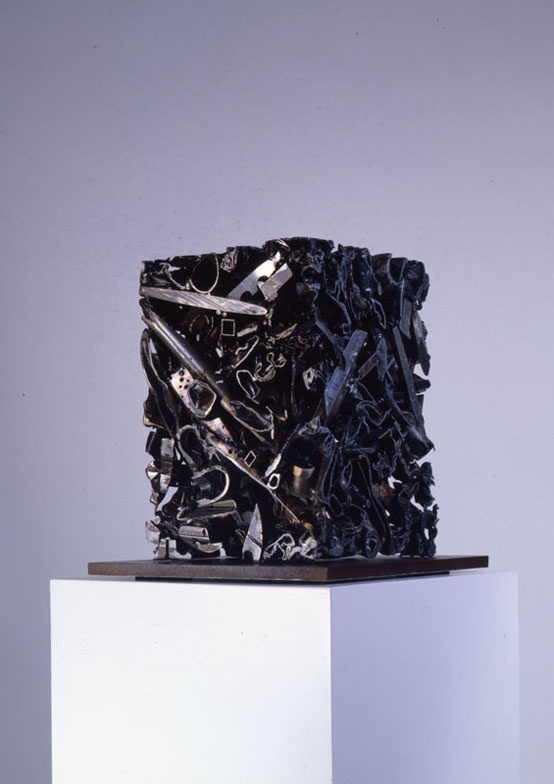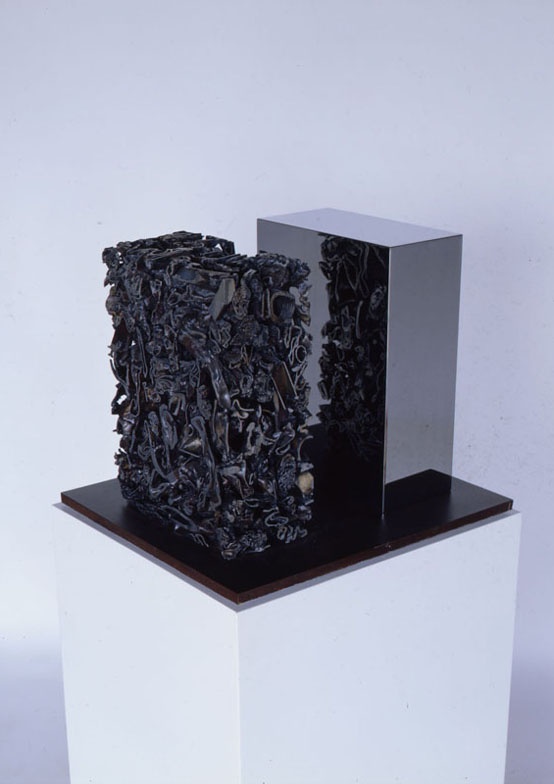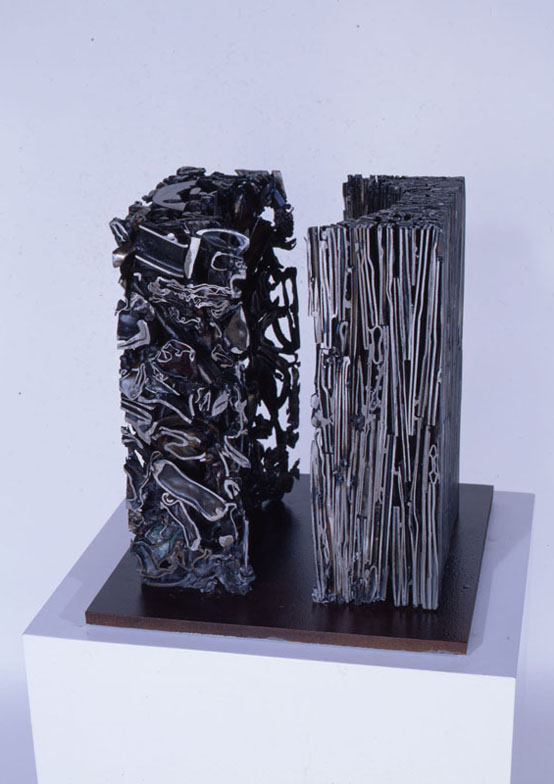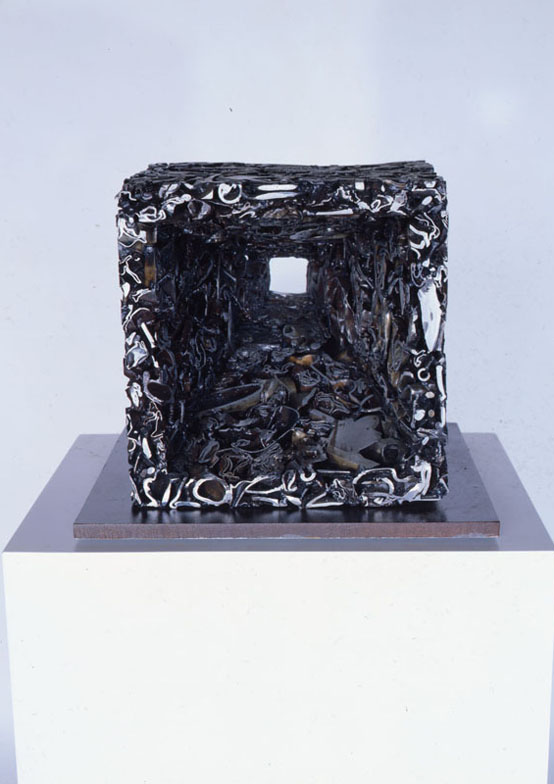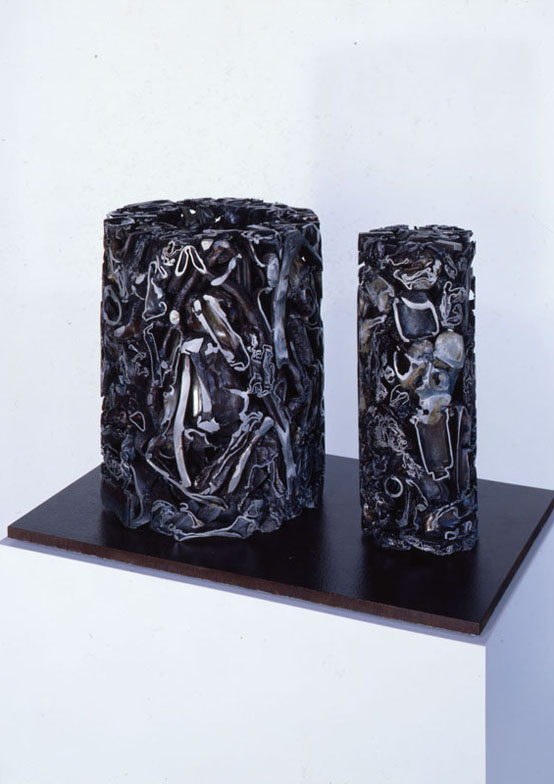仮想境界面/物体/ Imaginary Boundary Planes/Objects
ステンレス,スチール
おそらく、エドワード・T・ホールの、実体をポジティヴスペース、「隙間」、「余白」、「間」をネガティヴスペースとし、その両方を同価値として考える『かくれた次元』(みすず書房/1970)に強く影響されたのだろう。ネガティヴスペースの「隙間」、「余白」、「間」が、単なる空きではないと意識した時点から、ポジティヴスペースとネガティヴスペースを合わせた面が、外気との境界を意識させることで、その面を「仮想境界面」という言葉で語れた気がする。「仮想境界面/物体」とは? 幾つもの方向性がある「仮想境界面」を意識させ、三次元的物体と捉えられる何かがあると想像できるものを指している。
I believe that I was strongly influenced by The Hidden Dimension (Misuzu Shobo, 1970) in which Edward T. Hall considered solid things to be a positive space, and “gaps,” “margins,” and “ma” (space/interval in Japanese) to be negative space, but each to have the same value. From the point when I became aware that the “gaps,” “margins,” and “ma” in the negative space were not just empty space, the surface combining the positive space and negative space, made me aware of the boundary with the outside, and I felt the term “Imaginary Boundary Planes” could be used to describe this surface. So, what is this “Imaginary Boundary Plane/Object?” It refers to something that makes us aware of a “Imaginary Boundary Planes” with multiple directions, and what we imagine to be something that can be taken as a 3-D object.

